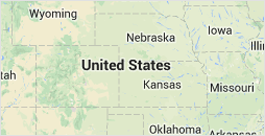Alester Brown
PHONE NUMBER : -----
Map

3 Myths about Borderline Personality Disorder
Borderline personality disorder (BPD) is a condition that creates a pattern of unstable moods, behaviors and relationships. While most people are vaguely familiar with BPD, having heard about it in movies and television, few understand what this condition truly is. Unfortunately, many misconceptions about BPD lead to unnecessary stigma around it.
Keep reading to get the truth about common BPD myths.
The Myth: Borderline Personality Disorder Symptoms are Rare
Contrary to popular belief, BPD is not an ultra-rare disorder. The latest estimates show that more than 14 million people in the United States alone have BPD. That's more than both schizophrenia and bipolar disorder.
It's more common than most realize. Furthermore, there's a good chance that the true number of people living with BPD is higher due to undiagnosed cases.
The Myth: BPD Only Occurs in Adults
Here's another major misconception. Many assume that only adults can have BPD. Some also think that people under 18 years old can't get an official BPD diagnosis. However, that couldn't be further from the truth.
The guidebook that health care professionals use to diagnose mental conditions, the Diagnostic and Statistical Manual of Mental Disorders (DSM), doesn't prohibit providers from diagnosing BPD in individuals younger than 18. In fact, proper diagnosis at a young age is critical. The sooner a diagnosis occurs, the quicker treatment can begin for patients. It's better to diagnose as soon as borderline personality disorder symptoms start.
The Myth: BPD is a "Women-Only" Condition
This myth is, perhaps, the most egregiously unfactual. However, it's a misconception that persists.
Many believe that BPD only affects women because of a lack of research on how the condition affects men. Earlier studies of the condition focused solely on women, creating the illusion that it disproportionately affected females. However, more recent data shows that the distribution between males and females is relatively equal.
BPD affects men, too. The problem is that women are more likely to seek help frequently than men do. That's changing, but there's still a long way to go.
Author Resource:-
Alester Brown writes about physiotherapy. She advises people on health care, online therapy, anxiety discussion groups & depression message boards. You can find her thoughts at online counselor blog.
